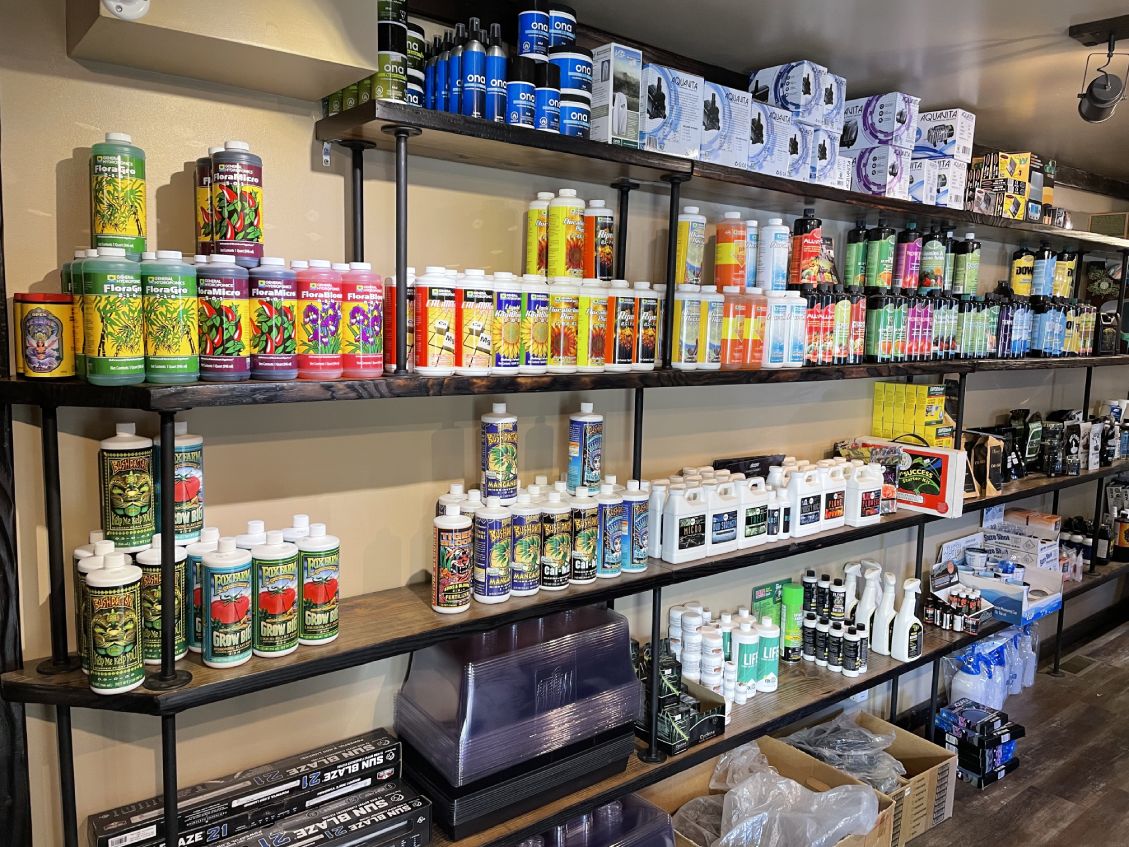Opening the Potential of Hydroponics: Understanding Its Uses and Different Kinds
Hydroponics, a method of cultivating plants without soil, has actually amassed enhancing focus for its prospective to change farming and cultivation practices. The precision control over nutrient shipment, water usage, and ecological factors uses a glance into a future where food production can be enhanced in various settings. As we navigate with the intricate landscape of hydroponic systems and techniques, it ends up being obvious that each strategy holds distinct advantages and limitations. By deciphering the varied usages and kinds of hydroponics, we can discover a globe of opportunities that might improve just how we envision sustainable farming and horticulture methods.
Advantages of Hydroponic Equipments

An additional benefit of hydroponic systems is the capacity to expand plants in a smaller sized area. Hydroponic systems reduce the threat of soil-borne illness and insects, as there is no soil to harbor these dangers.
Typical Utilizes in Agriculture

Provided the reliable water preservation and space-saving advantages of hydroponic systems, it is apparent that these innovative farming methods have located typical uses in various fields of farming. The regulated atmosphere of hydroponic systems makes it possible for year-round growing, offering a regular supply of fresh fruit and vegetables regardless of exterior weather condition conditions.
Hydroponics is generally utilized for expanding a variety of plants, including leafy environment-friendlies, tomatoes, cucumbers, strawberries, peppers, and natural herbs. Its flexibility reaches upright farming, metropolitan farming, and greenhouse production. Furthermore, hydroponic systems are utilized in study and academic setups to study plant farming, growth, and nutrition methods. The flexibility and efficiency of hydroponics make it an important tool in modern-day agriculture, addressing the difficulties of sustainability, food safety and security, and source optimization.
Exploring Different Hydroponic Strategies
What are the numerous cutting-edge strategies made use of in hydroponics to boost plant farming efficiency and yield? Hydroponic systems provide a series of techniques that satisfy different plant types and cultivation objectives. One preferred strategy is the Deep Water Society (DWC) system, where plant roots are submerged in a nutrient remedy, giving enough oxygen and nutrients. An additional commonly utilized method is the Nutrient Movie Strategy (NFT), which includes a shallow stream of nutrient remedy moving over the plant roots, promoting water and nutrient uptake. Additionally, the Ups and downs system, additionally understood as the Flood and Drain system, intermittently floods the plant origins with nutrient remedy, permitting oxygenation during draining durations. Aeroponics is one more advanced technique that entails misting plant roots with a nutrient solution, optimizing oxygen absorption and nutrient uptake. Each of these methods showcases the versatility and performance of hydroponic systems in improving crop development and yield.
Contrasting Different Hydroponic Systems
Checking out the efficiency and return enhancement techniques in hydroponics leads us to contrast various hydroponic systems readily available for crop growing. Each hydroponic system has its one-of-a-kind functions, advantages, and constraints, making it vital for growers to select the most ideal system based upon their content details needs and restraints.
One of the most usual hydroponic systems is the nutrient film strategy (NFT), where a slim movie of nutrient service constantly flows over the plant origins. In comparison, the deep water society (DWC) system submerges plant roots straight right into the nutrient service, providing sufficient oxygen and nutrients.
Another prominent hydroponic system is the ups and downs (or flooding and drainpipe) system, which periodically floodings the plant roots with nutrient solution before draining it. This cyclic procedure guarantees appropriate oygenation for the origins while delivering nutrients effectively. Additionally, the aeroponic system puts on hold plant origins airborne and hazes them with a nutrient remedy, advertising quick development and high oxygenation degrees. helpful hints Farmers looking for a flexible system that reduces water usage often go with aeroponics. By understanding the differences between these hydroponic systems, growers can make enlightened decisions to make best use of plant yield and quality.
Technologies in Hydroponic Modern Technology
One essential technology is the development of wise hydroponic systems that utilize sensing units and automation to monitor and change environmental conditions such as pH degrees, nutrient concentrations, and light exposure in real-time. These systems allow exact control over expanding conditions, leading to ideal plant development and higher crop returns.
An additional noteworthy improvement is the combination of upright farming techniques with hydroponic systems, permitting the farming of crops in piled layers. This upright method makes best use of room usage, making it ideal for metropolitan atmospheres where land accessibility is limited - The Indoor Earthworm. Furthermore, the use of sophisticated LED lights systems customized to details plant requirements has improved energy effectiveness and enhanced growth rates in hydroponic setups
Developments like these are driving the development of hydroponics, making it a highly eye-catching and lasting alternative for contemporary agriculture.
Verdict
Finally, hydroponics provides numerous advantages in agriculture and has various strategies and systems that can be utilized to optimize its capacity. Innovations in hydroponic modern technology continue to improve performance and sustainability in food production. By recognizing the uses and various kinds of hydroponic systems, farmers and growers can unlock the complete potential of this cutting-edge method of expanding plants without dirt.
Furthermore, hydroponic systems allow for much better control over nutrient degrees, pH balance, and environmental conditions, leading to much healthier plants and higher yields.
